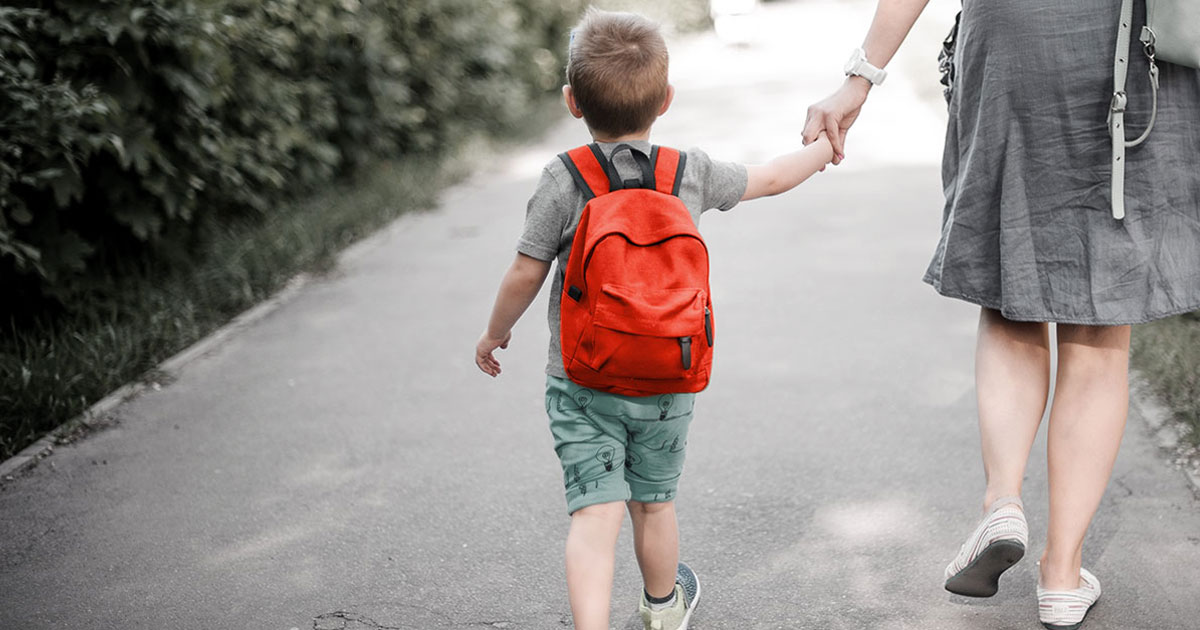
Carrying a backpack to school is common for school-age children, but when not done properly, backpack-wearing can impact physical health.
In her OccupationalTherapy.com course, Sara Loesche, MS, OTR/L, CHT, CEAS, covers the biomechanical impact of backpacks and how to choose, pack, and wear a backpack to promote student wellness.
Loesche explains that improper backpack-wearing can cause discomfort, musculoskeletal issues, and fatigue. However, there are ways to properly pack and wear a backpack to reduce biomechanical strain.
“Teaching our kids health and wellness habits can start with something as simple as a backpack,” Loesche said. “Choosing a backpack and wearing it correctly can help children start to develop responsibility for their own health and wellness and become aware of making healthy choices that will have a positive impact.”
The following information on how to pick, pack, and position a backpack is from Loesche’s OccupationalTherapy.com course Back to School: Discussing the Biomechanical Impact of Backpacks.
How To Pick, Pack And Postition a Backpack
Pick
- Choose a backpack with wide, padded shoulder straps. This helps to distribute the weight and to prevent impingement through the shoulder area and the axilla.
- Consider a fabric that will dry quickly so the backpack won’t be heavier when it gets wet.
- Chest or hip belts are recommended to hold backpacks in place. This helps distribute weight between the shoulders and the hips and throughout the back, rather than just in the shoulders.
- Selecting a backpack with multiple compartments allows the wearer to better distribute items within the backpack.
Pack
- The backpack should never exceed 10%-15% of the child’s body weight.
- Use compartments to distribute the weight of items in the backpack. Pack heavier items closest to the body for more stability.
- Remember to pack sharp items (e.g., pencils, drumsticks) away from the back.
Position
- Use both shoulder straps. Straps should be adjusted so the backpack falls between the shoulders and hip bones. Straps should be snug but not tight.
- Consider using a chest or hip belt to keep the backpack snug against the back and distribute weight more evenly.
Warning Signs of Trouble
- The backpack is difficult to take on and off.
- Child struggles with the weight of the backpack or gets caught in the backpack when removing it.
- Red strap marks are visible on the child’s shoulders after wearing.
- The child complains of pain, tingling, or numbness.
- The child says that the backpack feels heavy.
- Noticeable posture changes are observed.
Healthy Habits For Backpack Wearing
- Bend at the hips and knees when lifting a backpack.
- Pick the backpack up before threading the shoulders through the straps. When possible, place the backpack on a desk or whatever is near you, then turn around and thread the shoulders through the straps.
- Always wear both straps.
- Fill up water bottles at school rather than at home to reduce the weight of the backpack.
- Take breaks from carrying by removing the backpack when waiting at the bus stop or in the hallway.
- Monitor contents nightly and remove what isn’t needed.
- Organize contents for school-day rotation and unload unneeded items into a locker when possible.
Featured Presenter

Sara Loesche, MS, OTR/L, CHT, CEAS. Sara is an occupational therapist and an Associate Professor at Thomas Jefferson University in the Occupational Therapy Assistant Studies Program. For the past 10 years, she has taught a course in information literacy as it applies to occupational therapy in both the academic and practice environments. This has led to presenting on the topic at both state and national conferences.